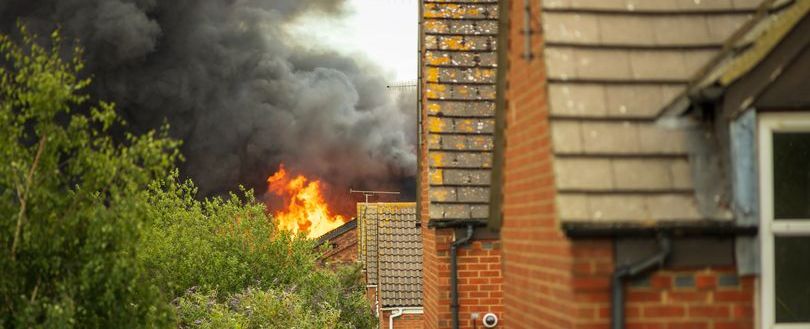
England’s Latest Fire Prevention Data Highlights Support for Vulnerable Households
Like it? Share it!
29 August 2025
The Ministry of Housing, Communities and Local Government (MHCLG) has revealed that fire and rescue services in England carried out 588,855 Home Fire Safety Visits (HFSVs) in the year ending March 2025. This marks a 2.9% rise on the previous year and is almost the same level recorded five years ago.
According to MHCLG, 85% of visits were made to households with at least one vulnerability – the highest proportion since targeting data was first gathered in 2021. Most visits (98%) were conducted face-to-face. Older people and disabled residents continued to be the main focus, with 388,817 visits directed at these groups.
Targeting of Prevention Work
The figures showed variation in the way prevention efforts were targeted:
- 166,344 visits were made to homes with at least one resident aged 65 and over with no disabled household members.
- 168,261 visits were completed in homes with both an older and a disabled resident.
- 54,212 visits were to households where all residents were under 65 but at least one was disabled.
- 112,306 visits were made to households with other vulnerabilities, though no specific category was recorded.
Smoke Alarm Ownership
The MHCLG reported that by March 2024, 92% of households in England had a working smoke alarm, up from 87% in 2012.
The data, taken from the English Housing Survey, remains one of the key indicators for fire safety monitoring. The department noted that survey changes during the COVID-19 period had influenced some results.
Fire Safety Audits and Compliance
In the year ending March 2025, fire and rescue services carried out 51,020 fire safety audits.
Of these, 58% were deemed satisfactory, a figure similar to the previous year but still the lowest since 2011.
Shops made up the largest proportion of audits (10,106 inspections), followed by care homes (6,461) and other sleeping accommodation (5,091).
Audits of purpose-built flats increased significantly, particularly in blocks of four to five storeys, which saw a 61% rise in inspections.
The average audit lasted 5.2 hours, the highest recorded so far.
Non-Compliance and Enforcement
MHCLG reported 10,323 breaches of Article 14 of the Fire Safety Order (covering emergency routes and exits), representing a 12% decrease from the previous year. Despite this, Article 14 breaches remained the most frequent.
Other common breaches were of Article 17 (maintenance) with 8,666 cases, and Article 9 (risk assessment) with 8,471 cases.
In total, 2,972 formal notifications were issued – up 5.3% on the previous year and 29% higher than five years ago.
The majority of these were enforcement notices under Article 30, totalling 1,728.
Wider Fire Protection Activity
Fire and rescue services also delivered 47,665 building regulation consultations, up 4.8% on the previous year but down 6.2% compared with five years earlier.
In addition, there were 26,614 other consultations and 119,610 non-statutory fire safety activities.
Shops accounted for the largest share of non-statutory activities (32,583 cases).
The average time spent on such activities dropped over the five-year period to 1.2 hours.
Relevance for Fire Safety Professionals
These statistics provide valuable insight into prevention and protection work carried out by fire and rescue services.
They highlight the continued focus on vulnerable households, offering an evidence base for assessing future needs.
Data on smoke alarm ownership supports the evaluation of national safety campaigns and housing policy, while audit and enforcement figures show compliance trends across premises types.
View the source.
Our eNews provides regular insight into industry trends, news headlines, and product and service information. For more articles like this Subscribe to our enews.
Related news
Related resources
-
Passenger Service Vehicle - Guidance Note
05 September 2023
